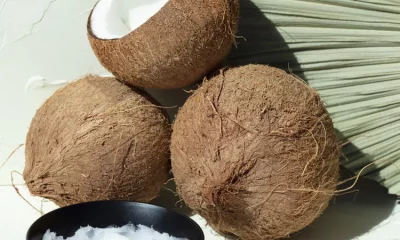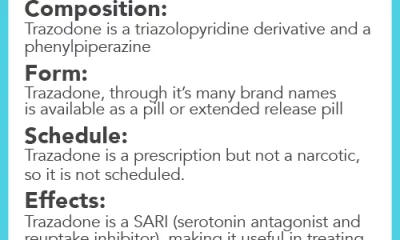Health
9 benefits of maple syrup

Discover the 9 benefits of maple syrup.
Most people already consume a lot of sugar, probably even much more than they need.
With that said, maple syrup is one of the sweeteners you should use in small amounts and a good alternative to cane sugar when used in moderation.
Do you love maple syrup? See all the nutritional benefits in this guide.
Like the contrast between whole and refined grains, natural, unrefined sweeteners like maple syrup contain higher levels of beneficial nutrients, antioxidants, and phytochemicals than white table sugar or high-fructose corn syrup.
This is also why we see the many health benefits of raw honey. When used in appropriate amounts, the nutritional benefits of maple syrup can include the ability to reduce inflammation, supply nutrients, and better manage blood sugar.
Maple tree syrup, or more accurately the sap, has been used for centuries. The sap of various maple trees began to be processed into syrup long before European settlers arrived in the Americas.
Native Americans had theories about maple syrup’s nutritional impact even back then, and the sweetener had cultural significance to many Aboriginal tribes.
They even celebrated the sugar moon (the first full moon of spring) with a maple dance and saw maple sap as a source of energy and nutrition.
What are the benefits of maple syrup
Compared to refined cane (or “table”) sugar, which offers absolutely no nutrients, maple syrup contains some important antioxidants and minerals like zinc and manganese. When we do a side-by-side comparison of sugar nutrition and maple syrup nutrition, we see that they have some things in common, but also some things that make maple syrup more favorable.
Because maple syrup is better than sugar
Both are made from about two-thirds sucrose, but maple syrup provides less sugar overall to your diet and more nutrients. Maple syrup’s glycemic index score is around 54, compared to a score of around 65 for regular cane sugar.
This means that one of the benefits of maple syrup nutrition is that it affects your blood sugar levels a little less drastically than table sugar. Maple syrup also provides some minerals and antioxidants, while sugar lacks both.
Another factor that makes these two sweeteners very different is how they are made. Maple syrup is derived from the sap of maple trees.
Unlike refined cane sugar, which undergoes a long and complex process to be condensed into crystallized sugar, maple syrup is a relatively more natural and unrefined product.
And as you probably know, high fructose corn syrup is not a natural or healthy choice, and neither are artificial sweeteners (hence the name).
For example, sugar cane stalks and beets are mechanically harvested, cleaned, washed, ground, extracted, squeezed, filtered, purified, vacuumed, and condensed, even before they are converted! in sugar crystals!
Maple Syrup Nutrition Facts
1 tablespoon of maple syrup contains approximately:
•7 milligrams of manganese (33 percent of the recommended daily value, or DV)
•0.8 milligrams of zinc (6 percent DV)
•13.4 milligrams of calcium (1 percent DV)
•8 milligrams of potassium (1 percent DV)
•0.2 milligrams of iron (1 percent DV)
•8 milligrams of magnesium (1 percent DV)
9 Health Benefits of Maple Syrup
1.- Contains numerous antioxidants
According to studies comparing the total antioxidant content of natural sweeteners with refined sugar products such as white sugar or corn syrup, substantial differences in total antioxidant content were found.
Refined sugar, corn syrup, and agave nectar contain the least antioxidant activity, but maple syrup, black and black molasses, brown sugar, and raw honey showed the highest antioxidant capacity (with the highest molasses).
A good reason to use change your sweetener? Maple syrup nutrition is impressive when it comes to supplying protective antioxidants. The medical journal Pharmaceutical Biology revealed that pure maple syrup contains up to 24 different antioxidants.
These antioxidants, in the form of phenolic compounds, are beneficial in reducing free radical damage that can cause inflammation and contribute to the formation of various chronic diseases. Whenever possible, select darker grade B maple syrups, as these contain more beneficial antioxidants than lighter syrups.
Some of the major antioxidants found in maple syrup include benzoic acid, gallic acid, cinnamic acid, and various flavonoids such as catechin, epicatechin, rutin, and quercetin.
While most are found in low concentrations, others are present in higher amounts, so the benefits of these antioxidants may offset some of the downsides of consuming the high amount of sugar in the syrup.
2.- Reduces the glycemic index
The liver refines the rapid metabolism of refined sugar and refined carbohydrates in general, causing a “sugar high” followed by a “sugar crash.” Even worse, consuming too much sugar rapidly raises blood sugar and increases insulin levels, which over time can lead to lower insulin response and problems with blood glucose control, and is the reason it develops diabetes.
However, keep in mind that consuming too much sugar, from any source, is a major cause of some of the most widespread health problems, such as obesity, type 2 diabetes, and heart disease, even natural sweeteners should be used like maple syrup in small amounts.
When it comes to solutions to naturally reverse diabetes or other blood sugar-related conditions, it’s best to minimize your overall sugar intake and especially avoid refined sugar.
3.- Fights inflammatory diseases
Because maple syrup nutrition supplies polyphenolic antioxidants that reduce inflammation, it can be considered part of a healthy diet that helps prevent certain conditions such as arthritis, inflammatory bowel disease, or heart disease.
The plant-based compounds in maple syrup reduce oxidative stress, which is responsible for aging us at a faster rate and reducing the strength of our immune systems.
4.- It can help protect against cancer
While some evidence shows that, to some degree, sugar can cause or at least contribute to cancer, maple syrup appears to be a much less harmful sweetener.
This is due to the presence of antioxidants in maple syrup that can protect cells from DNA damage and mutation.
While maple syrup alone won’t reduce your risk of developing cancer, it’s a much safer option than including high levels of refined sugar or artificial sweeteners in your diet.
5.- Helps protect skin health
Many people swear by using maple syrup topically, directly on their skin.
Similar to raw honey, maple syrup can help reduce inflammation, redness, blemishes, and dry skin.
Combined with raw milk or yogurt, rolled oats, and raw honey, this natural blend is applied to the skin as a mask that can moisturize the skin while reducing bacteria and signs of irritation.
6.- Alternative to sugar to improve digestion
Consuming high levels of refined sugar can contribute to candidiasis, irritable bowel syndrome, leaky gut syndrome, and other disorders of the digestive system.
One of the most important steps you can take to heal leaky gut and autoimmune disorders is to reduce your consumption of refined sugar and opt for small amounts of natural sweeteners instead.
Most artificial sweeteners also cause symptoms of indigestion, such as gas, bloating, cramps, and constipation.
To keep your digestive tract in a healthier shape, free from chemicals and the damage caused by a high-sugar diet, maple syrup can be a much better alternative to use in baked goods, yogurt, oatmeal, or smoothies.
7.- Supplies important vitamins and minerals
Maple syrup contains zinc and manganese in fairly high amounts, as well as potassium and calcium.
Zinc can help fight disease and improve immunity by maintaining white blood cell levels, while manganese plays a crucial role in fat and carbohydrate metabolism, calcium absorption, blood sugar regulation, brain function, and the nervous.
8.- A healthier alternative to artificial sweeteners
If you regularly use artificial sweeteners or refined sugar products like Splenda, sucralose, agave, aspartame, or dangerous sugar, you should consider switching to maple syrup and raw honey as soon as possible.
Artificial sweeteners, while they may be calorie-free, are linked to numerous health problems including weight gain, fatigue, anxiety, depression, learning disabilities, short-term memory loss, and more.
Many existing diseases can be made worse by repeated use of artificial sweeteners, and they also show unfavorable results when it comes to weight loss.
It is quite possible to become addicted to the artificial sweeteners used in many diets or light meals, as they affect food cravings and your ability to control your body’s signs of hunger and fullness.
Maple syrup isn’t linked to any of these health issues, plus it’s more satisfying due to its naturally sweet taste.
9.- It can improve the antibiotic effects
Antibiotics may seem like a quick and easy fix for several different illnesses, but as new research comes out, it’s getting harder to ignore the dangers and downfalls of antibiotic use.
While they target bad bacteria, antibiotics can also attack healthy cells, while overuse of antibiotics results in the creation of “superbugs” that no longer respond to antibiotic treatment.
When researcher Nathalie Tufenkji and her team investigated maple syrup extracts in conjunction with the antibiotics ciprofloxacin and carbenicillin, they observed the same antimicrobial effect with more than 90 percent fewer antibiotics.
In other words, the maple syrup extract helped the antibiotics work better. How? The researchers discovered that the extract increases the permeability of bacteria, helping antibiotics inside bacterial cells.
“There are other products that increase antibiotic resistance, but this may be the only one that comes from nature,” says Tufenkji. More research and testing for allergic reactions are still needed before this can become part of a medical protocol, but Tufenkji’s research suggests hope against antibiotic resistance in the future.
History of maple syrup
Maple syrup is one of the oldest forms of sweetener out there, having been eaten by Native Americans living in North America hundreds of years ago.
Maple syrup was first collected and used by indigenous peoples before it was introduced to early European settlers, who discovered ways to quickly improve the technology needed to collect more.
Due to its natural harvesting method and history as a healing sweetener, this is one of the reasons many people choose maple syrup and raw honey as their sweeteners of choice, even those on the Paleo diet, for example.
Today, Canada supplies more than 80 percent of the world’s maple syrup. In the United States, the largest maple syrup-producing state is Vermont.
Maple syrup has been made in Vermont for hundreds of years; in fact, some large maples in Vermont that are still providers of sap today are more than 200 years old. Most maple trees are 10 to 12 inches in diameter and are usually around 40 years old.
How maple syrup is made
In all plants, one kind of sugar is naturally present. The primary sugar of plants is a product of photosynthesis that occurs when sunlight comes into contact with the leaves of the plant. Sucrose is the most prevalent type of sugar found in maple syrup (at least 66 percent of the sugar in maple syrup must be sucrose to be considered pure).
Sugar synthesized in plants is used as a source of energy for growth and is stored throughout the plant, usually in the roots.
In most plants, sugar is not easily extracted from plant roots, stems, or leaves (as in sugar cane plants) without undergoing mechanical and chemical processes, but in the case of maples, the sap is easily collected.
According to the makers of Vermont maple syrup, “A tree that produces sap is like a person who donates blood.” They both have something to spare.” The sugar produced by maple tree leaves during the summer is stored as starch in the roots, then during the winter months “taps” are inserted into the trees. After the plug is drilled, a spout is connected with a bucket and a hook or tube.
Then, when spring comes and the temperature gets warmer, a pattern of freezing and thawing temperatures increases the pressure inside the trees, causing sap to flow from the holes in the buckets.
The cubes are collected by hand and added to large tanks were some of the water evaporates and is removed to produce a richer syrup. And that’s it, the process is that simple. A typical “sugar” season lasts 4-6 weeks, and it takes 40 gallons of sap to make each gallon of maple syrup!
How to buy and use pure maple syrup
To get all of these nutritional benefits of maple syrup, you’ll need to be careful to buy the right kind. Many maple syrups sold in stores are imposters or maple syrup “flavored” sugars that are highly refined.
Check the ingredient label carefully to make sure pure maple syrup is the only (or main) ingredient, not refined cane/beet sugar or high-fructose corn syrup.
It’s also smart to buy organic maple syrup whenever possible, which ensures the trees aren’t treated with any chemicals.
All types of pure maple syrup are classified as “grade A” or “grade B.” Both grade A and grade B maple syrups can be good options, as long as they are pure and free of preservatives, artificial colors, and flavors.
The biggest difference is that Grade B syrups are darker in color and more concentrated, so they’re generally used for cooking rather than drizzling on food.
Some research also shows that grade B syrup tends to be higher in antioxidants than grade A.
Most store-bought maple syrup is grade A, the lightest type used to sweeten pancakes. There are also several different types of Grade A syrups, ranging in color from light to dark amber. The darker the syrup, the later in the year it is harvested and the stronger the flavor.
When using maple syrup instead of table sugar in baked goods, replace the regular sugar content with the same amount of maple syrup but reduce the amount of liquid the recipe calls for by about a half-cup.
This will give it just enough of a sweet flavor without adding too much moisture and diminishing the texture you’re looking for. In smoothies, salad dressings, or other liquids, you can replace sugar or agave nectar with maple syrup.
Maple syrup recipes
Maple syrup is a heat-stable sweetener that works well in many types of recipes, so you can use it in many ways, including in marinades, dressings, glazes, baked recipes, or just on its own. It’s even a good alternative to white sugar in your morning coffee or tea.
Maple Breakfast Sausage Recipe
Total time: 25 minutes
Serving: For 4 people
Ingredients
•1 pound grass-fed ground beef
•2 tablespoons coconut aminos
•1/2 cup maple syrup
•2 tablespoons of ghee
Procedure
•In a large bowl, mix all the ingredients.
•Place a skillet over low heat and add the butter.
•Shape meat into sausage links and place in skillet.
•Cook with the lid on for 15-20 minutes or until cooked through.
Concerns about the consumption of maple syrup
As mentioned above, maple syrup can be a good natural sweetener option when serving sizes are kept small and eaten in combination with other whole foods.
While maple syrup does contain some nutrients and benefits over white sugar, it does not provide a very high level of important vitamins or minerals compared to other whole foods like vegetables, fruits, and high-quality protein and fat.
As a result, it might be best to think of it as a better alternative to sugar, but not necessarily something you should strive to include in your diet every day. As long as you have maple syrup in moderation it shouldn’t create a problem, just make sure you buy the best kind possible and watch your portion!
From the looks of it, you may think a leaky gut only affects your digestive system, but it can affect more. Because Leaky Gut is so common, and that conundrum, I’m offering a free webinar on all things leaky gut.
Health
13 Benefits of sorrel and side effects
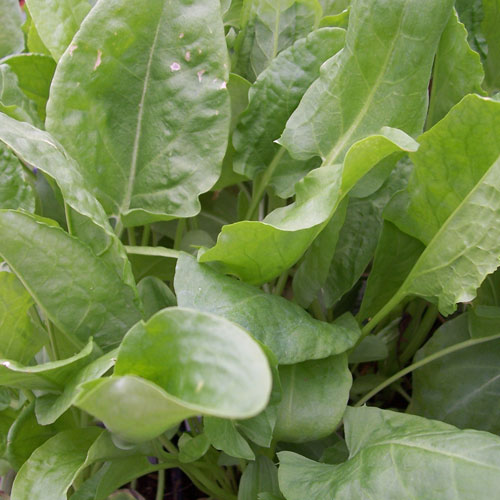
Table of Contents
Health
Benefits of hyaluronic acid for acne

- Methods of treatment
- FREQUENT QUESTIONS
- What is the main indication of hyaluronic acid in acne scars?
- When is the effect of hyaluronic acid noticeable?
- How is hyaluronic acid applied?
- How many hyaluronic acid sessions are needed to treat facial acne scars?
- How is the face after doing the filling session?
- Is it a painful procedure?
- Can fillers be combined with other acne scar treatments?
- Is the effect of hyaluronic acid definitive?
Discover the benefits of hyaluronic acid for acne.
In most acne scars there is a loss of skin volume ( atrophy ), which gives the area where they form a depressed or “engraved” appearance.
This atrophy is the product of a lack of hyaluronic acid and collagen in the dermis, the intermediate part of the skin, responsible for giving the turgidity, volume, and elasticity of healthy skin.
Methods of treatment
There are different methods to treat atrophic scars, which we could classify into two different groups according to their speed of action:
· Immediate effect. They are called fillers, biocompatible substances that can be injected into the skin to give volume to areas that have lost it.
Among them, those of hyaluronic acid, polylactic acid, or calcium hydroxyapatite stand out among others. Its turgid effect is immediate, filling cavities, furrows, and atrophic areas of the skin with very natural results. The duration of these materials is limited, so periodically (every 6 – 18 months ) it is common to practice a new session.
· Delayed effect. It implies that they promote the synthesis of collagen and ground substance of the dermis. It is worth mentioning the fractional lasers (ablative or non-ablative) and the intermediate and deep peels.
The main advantage of these methods is that their effect is permanent once the optimal point of improvement has been reached, which is not immediate but after practicing several sessions of the procedure.
Hyaluronic acid is indicated in the treatment of atrophic, depressed, and ice-pick acne scars. There are different densities of hyaluronic acid, designed to treat different forms of atrophy or loss of volume.
For the treatment of moderate or ice pick acne scars, it is useful to use low and intermediate densities; and to recover a large volume in especially atrophic areas, it is possible to use higher densities to cover the maximum repertoire of defects.
The main advantages of using hyaluronic acid lie in its immediate action, its durability, its biocompatibility, and its minimal allergenic potential. This molecule can fill in atrophic scars, providing optimal volume immediately and in the short term, promoting collagen synthesis in the long run.
In this way, the irregularity on the surface of the skin is substantially reduced after the application of hyaluronic acid, improving the overall appearance of the skin in the treated area.
Another positive aspect of using hyaluronic acid is that it usually only requires a single application session. Likewise, fillers are one of the best tolerated aesthetic procedures since they have a minimal rate of adverse effects and the pain caused is minimal if a precise technique is followed. Slight erythema (redness) that lasts 2-4 hours after the procedure is common and can be reduced with the application of cold compresses.
According to studies published by Halachmi et al, the satisfaction rate and results in patients with atrophic acne scars and ice pick treated with hyaluronic acid are excellent.
The only limiting aspect of hyaluronic acid fillers is their duration. This molecule is naturally degraded in the skin, its effect persisting for 6-18 months depending on the density of hyaluronic acid used and the indication for which it has been applied.
Specifically, for acne scars, the duration of hyaluronic acid is the maximum possible, since it is retained within the fibrosis that partitions the scars. It should be remembered that, in the long term, this molecule favors the synthesis of collagen, so that the perceptible effect is progressively more durable as different sessions are carried out.
FREQUENT QUESTIONS
What is the main indication of hyaluronic acid in acne scars?
Its main effect is to fill in depressed scars and regularize the appearance of the skin surface.
When is the effect of hyaluronic acid noticeable?
The effect of hyaluronic acid is immediate and noticeable at the end of its application. Over a week or so, the hyaluronic acid settles in the applied area and the surface where it has been applied progressively becomes even more regular.
How is hyaluronic acid applied?
The procedure is performed in the Dermatology consultation through microinjections applied under the scars to be treated. An anesthetic cream is usually used before the session and it is very tolerable, with minimal discomfort.
How many hyaluronic acid sessions are needed to treat facial acne scars?
In general, if they are not very deep or extensive, one is enough.
How is the face after doing the filling session?
The corrective effect of hyaluronic acid is immediate. At the end of the session, most atrophic and depressed scars have recovered all or part of their lost volume. Immediately after the session, it is usual to see some redness in the treated areas and slight swelling, which usually lasts between 2-4 hours.
It is possible, although infrequent, that during the procedure a minimal punctual hematoma may appear in an injection area, which will disappear spontaneously over a week or so.
Is it a painful procedure?
Filling with hyaluronic acid after application of anesthetic cream is one of the most well-tolerated and appreciated aesthetic procedures, with an excellent satisfaction rate for the patient.
Can fillers be combined with other acne scar treatments?
Yes. They can be used concomitantly with ablative/non-ablative peels or lasers, or even botulinum toxin if desired. It is recommended, yes, to carry them out in different sessions.
Is the effect of hyaluronic acid definitive?
No. Although with each session there is a certain accumulation of the effect due to the collagen synthesis promoted by hyaluronic acid, it is advisable to perform a filler every 6-18 months depending on the indication and the area to be treated.
Health
10 Benefits Of Feijoa Or Pineapple Guava
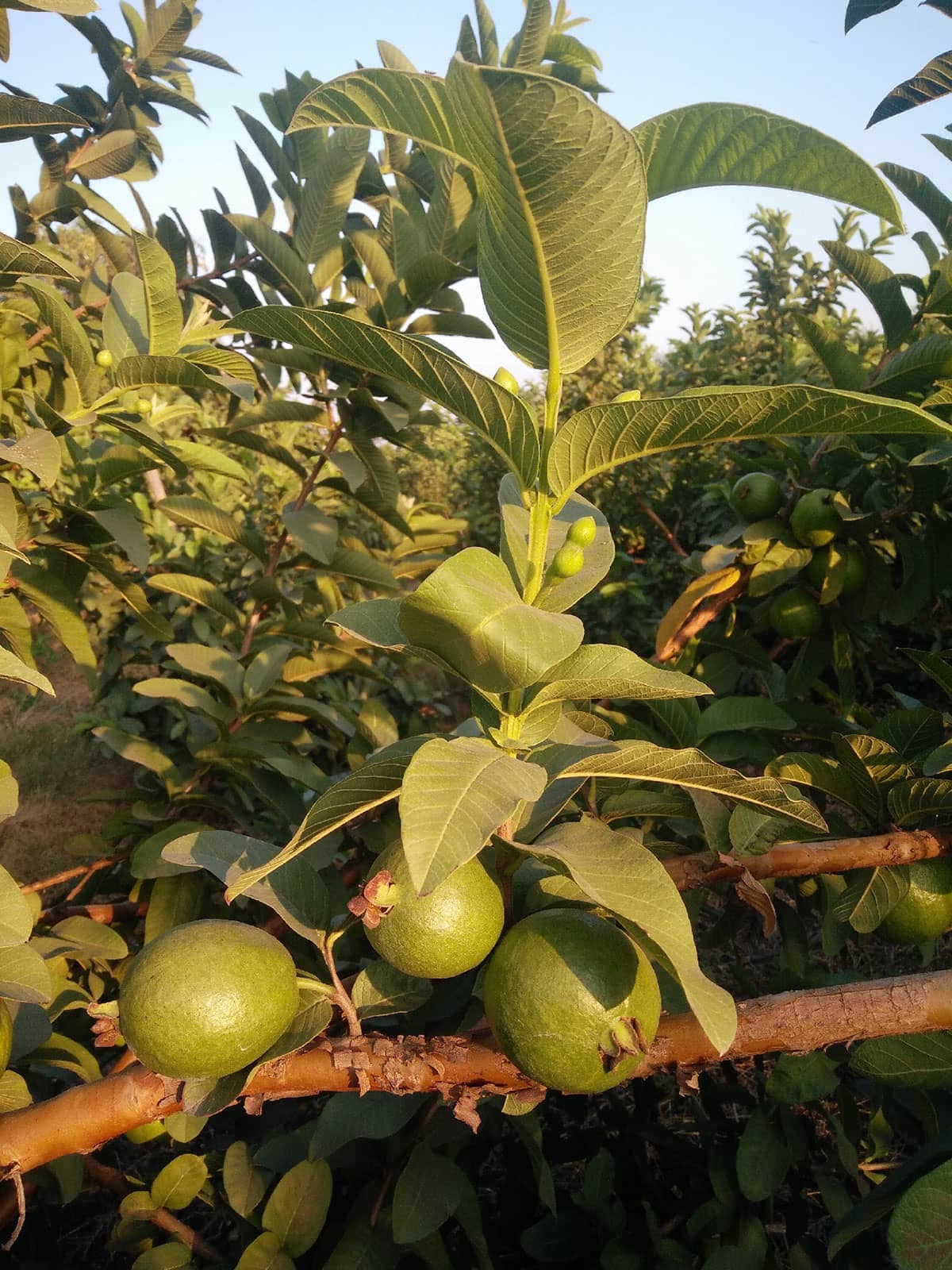
Table of Contents
- What is feijoa or pineapple guava?
- Knowing the flavor of feijoa
- Nutritional contributions of feijoa.
- 10 health benefits of feijoa.
- How to eat feijoa?
- Discover the 10 Benefits Of Feijoa Or Pineapple Guava.
Feijoa can have a wide range of health effects, including aiding weight loss, improving digestion, lowering cholesterol levels, boosting the immune system, increasing bone strength, lowering blood pressure, optimizing nutrient absorption, balance metabolism, increase circulation, stimulate cognitive function and regulation of blood sugar levels, among other benefits of feijoa.
There are very few reported side effects, although allergies to this fruit do exist, and some reports of gastrointestinal problems and low blood sugar levels have been documented.
That said, for most people who consume this fruit in moderation, it offers far more health benefits than side effects, so there’s no running away from the benefits of feijoa.
What is feijoa or pineapple guava?
Feijoa has another name in many parts of the world: pineapple guava. Scientifically known as Acca sellowiana, the plant that produces this fruit is a shrub or small tree native to regions of South America, such as Argentina, Brazil, and Colombia. It is now widely cultivated for its sweet fruit, as well as for ornamental purposes.
The fruit is green and ellipsoid-shaped and is about the size of a plum or a small avocado.
The unique flavor and impressive supply of nutrients make feijoa highly sought after as it can have many different culinary applications, from an ingredient in smoothies to cocktails, desserts, chutneys, and cooked fruit dishes.
Knowing the flavor of feijoa
Feijoa has a very unique flavor, with sweet, sour, and bitter elements, which many people compare to guavas and pineapples, as its common name implies, but it also has a slight strawberry flavor. In some cultivars, there are very subtle notes of mint, which can increase as the fruit ripens.
To ensure the best flavor and flavor of the feijoa, the fruits should be collected the day they fall from the tree, as this indicates the ideal ripeness.
Before that, the taste is more bitter, while after the fruit falls, it can become too ripe and unpleasant to eat.
Nutritional contributions of feijoa.
Whether you are eating the fruit for its benefits or its exotic flavor, you will benefit from its impressive nutrient content.
The calorie content per serving (100 grams) is just 55, which is unusually low, this tropical fruit also contains significant levels of vitamin C (over 50% of your daily recommendation per serving), as well as a diverse selection of B vitamins. and traces of vitamin E, K, and A.
In terms of mineral content, feijoa contains moderate levels of copper, manganese, magnesium, potassium, iron, and calcium.
A single serving of this fruit also delivers more than 15% of your recommended daily dietary fiber, in addition to various phytochemicals, phenols, and antioxidants.
10 health benefits of feijoa.
People who regularly consume this fruit to make themselves available to the benefits of feijoa will receive health favors related to blood pressure, cholesterol, obesity, immune health, oxidative stress, metabolism, osteoporosis, indigestion, diabetes, circulation, cognitive function, and nutritional deficiencies.
1.- Increase immunity
With a strong supply of vitamins and minerals in the fruit, the benefits of feijoa allow regular consumption to give your immune system a much-needed boost.
Vitamin C can stimulate the production of white blood cells, the body’s first line of defense, while also acting as an antioxidant to search for free radicals; a single serving of pineapple guava has more than 50% of your recommended daily vitamin C.
2.- Regulates blood pressure
Potassium-rich foods are important for people who suffer from high blood pressure and therefore are at high risk for cardiovascular disease, atherosclerosis, and stroke.
Potassium is a vasodilator, which means that it can reduce stress on blood vessels and arteries, and generally relieve stress on the cardiovascular system.
3.- Digestion AIDS
High levels of dietary fiber (about 17% of your recommended daily fiber per serving) mean that this fruit is capable of optimizing digestion by stimulating peristaltic movement and enhancing nutrient absorption.
This can help ease symptoms of indigestion, constipation, bloating, cramps, and a general upset stomach.
4.- Reduces cholesterol
In addition to improving digestion, dietary fiber is also directly linked to lower cholesterol levels, particularly “bad” cholesterol, which can increase your risk of heart disease.
By removing this cholesterol from the arteries and blood vessels, it lowers the risk of blood clots, heart attacks, and strokes.
5.- Improve Cognition
The antioxidants present in feijoa have been associated with increased memory and retention, better focus, and a lower risk of neurodegenerative diseases, such as mental illnesses such as Alzheimer’s and dementia; antioxidants can seek out and neutralize free radicals in neural pathways before they can cause plaque buildup.
6.- Increases metabolism
The B vitamins are incredibly important for the overall functioning of the body, especially when it comes to metabolic activities such as the synthesis of proteins and red blood cells, the production of hormones, the stimulation of the functioning of the nervous system, and the generation of energy within cells. . Fortunately, feijoa benefits from moderate levels of numerous B vitamins.
7.- Improves bone strength
With significant levels of manganese, copper, iron, calcium, and potassium, this tropical fruit is very effective in increasing bone mineral density and helping prevent the onset of osteoporosis as you age. This can increase your energy levels and keep you more active and capable in your later years.
8.- Control diabetes
Research has shown that eating feijoa can help regulate blood sugar levels, due to its low level of calories and carbohydrates, which can help regulate the body’s production and release of insulin.
9.- Increase circulation
Although there is a relatively small amount of iron present in feijoa, it can still aid red blood cell production and circulation, while the metabolic boost from vitamin B can also stimulate blood flow. This means greater oxygenation in critical areas of the body and higher energy levels.
10.- Promotes weight loss
There are only 55 calories in a 100 gram serving of the feijoa, but plenty of dietary fiber and nutrients. Combined with the low level of carbohydrates, this means that the body will feel full and access a significant supply of nutrients without adding too many calories or sugar to your daily intake. This can have a positive impact on weight loss goals and avoid overeating or snacking between meals.
How to eat feijoa?
The skin of the pineapple feijoa or guava fruit is edible, but many people prefer to cut the fruit in half, such as avocado, remove the seeds, and then scoop out the soft, sweet pulp with a spoon. However, simply slicing the fruit, without removing the skin, can deliver even more dietary fiber.
The bitter taste mainly occurs near the skin of the fruit, so if you want a sweeter snack, remove the skin entirely. The fruit is at ideal maturity when the pulp of the seed is completely clear.
As this fruit tends to ripen very quickly, there may be some brown or discoloration near the center, but this does not mean that the fruit is rotten and that the creamy flesh is perfectly safe to eat.
Avoid eating pineapple guavas that are more than half golden on the inside, as they may have started to go bad.
-

 Food1 year ago
Food1 year ago10 + Benefits of carrot juice and side effects
-

 Benefits4 months ago
Benefits4 months agoThe Benefits of Joining Gym Lumolog – Improve Your Fitness & Health
-

 Health1 year ago
Health1 year ago50 Super Healthy (And Very Often Cheap) Foods
-
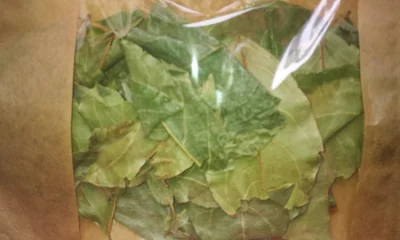
 Health1 year ago
Health1 year ago5 Shocking health benefits of kinkeliba and side effects
-

 Food1 year ago
Food1 year ago8 shocking benefits of leek juice and side effects
-
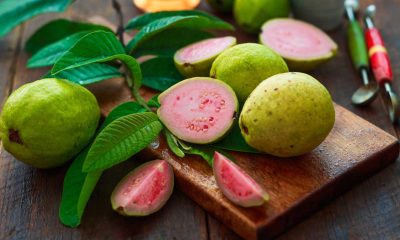
 Health1 year ago
Health1 year agoBenefits of guava leaves Sensually
-

 Weight Loss1 year ago
Weight Loss1 year agoChaz Bono weight loss secret
-

 Health1 year ago
Health1 year ago15 Benefits of lipton tea and side effects





